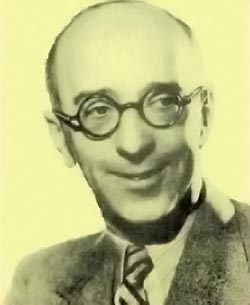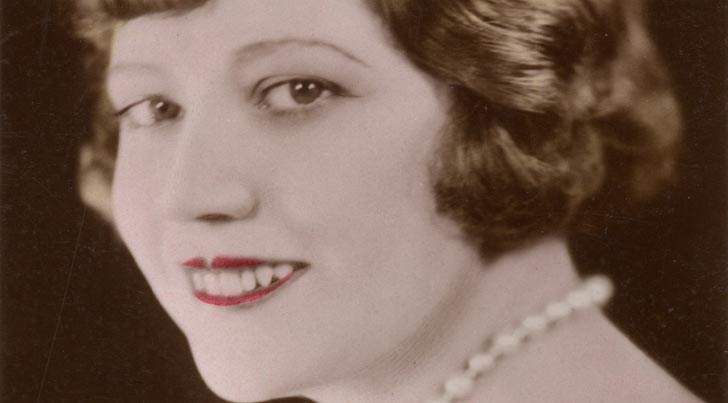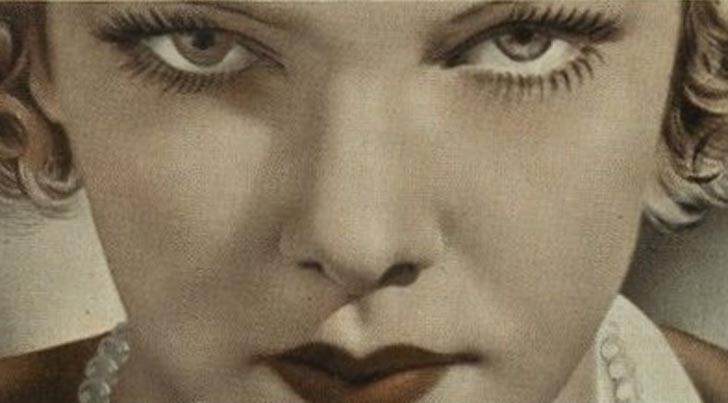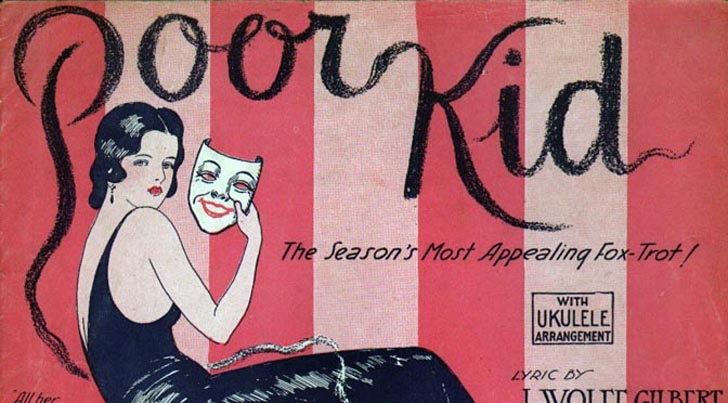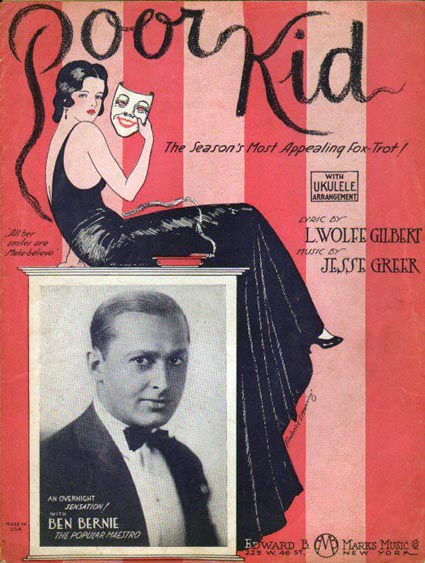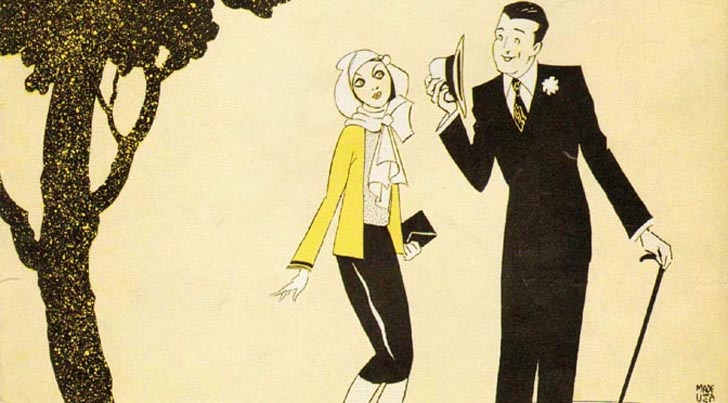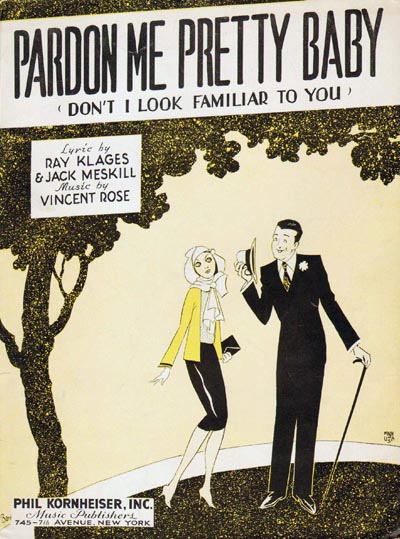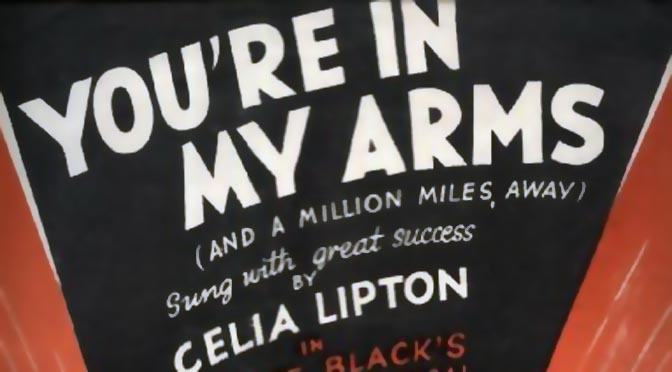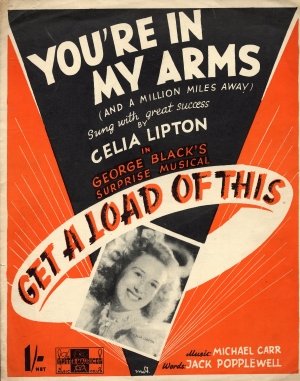“Ain’t Misbehavin’.” Music by Fats Waller and Harry Brooks, with lyrics by Andy Razaf (1929). Recorded by Elsie Carlisle under the musical direction of Jay Wilbur in London, c. October 1929. Dominion A. 215.
Elsie Carlisle – “Ain’t Misbehavin’”
Transfer by Mick Johnson (YouTube)
For a song that has been recorded well over a thousand times over the better part of a century, “Ain’t Misbehavin’” seems particularly evocative of the time of its conception: the year 1929, in the months preceding the stock market crash. It was composed for an all-black musical revue called Hot Chocolates which was so popular with audiences at the popular Harlem speakeasy Connie’s Inn that it moved on to the Hudson Theatre on Broadway, where it had 219 performances. It was at Hudson Theatre during the run of Hot Chocolates that Louis Armstrong had a sort of Broadway debut; he played “Ain’t Misbehavin’” on the trumpet during intermissions.
Credited co-composer Harry Brooks, who has been occasionally dismissed as a mere arranger of the song for Hot Chocolates, would later explain that the tune of “Ain’t Misbehavin’” was written in imitation of the beginning notes and bridge of Gershwin’s 1924 song “The Man I Love.” Fats Waller claimed that the title “Ain’t Misbehavin’” was a reference to his inability to misbehave in alimony jail, which is where he claimed to have composed the song. Andy Razaf, who outlived Waller by three decades, would later explain that Waller was misbehaving in misleading people: Razaf had come up with the title and the lyrics in Waller’s house in New York, where they finished the whole song in 45 minutes.
Elsie Carlisle sang other music with lyrics by Andy Razaf, including “My Man o’ War,” “The Porter’s Love Song,” “My Handy Man,” and “My Handy Man Ain’t Handy No More,” but whereas those songs lean towards naughtiness – misbehavin’, one might almost say – “Ain’t Misbehavin’” is charming in that it defines the qualities of fidelity and sincerity by alluding to their opposites. Elsie sounds fetchingly innocent as she declares her loyalty and denies any misconduct. Particularly touching is how she handles the upwards and downards progressions with the lyrics
Like Jack HornerIn the corner,Don’t go nowhere.What do I care?Your kisses are worth waiting for,Believe me.
It is ironic that Elsie’s recorded image would later make an unintentional appearance in what would appear to be a rather pornographic 1974 movie (I have not had the pleasure of seeing it myself) entitled Ain’t Misbehavin’, in which old footage is used of her singing “My Canary Has Circles Under His Eyes,” along with Fats Waller singing “Ain’t Misbehavin’” and “Honeysuckle Rose” (and Django Reinhardt playing Gershwin’s “The Man I Love,” and who knows what else that appears in this article), all interspersed with vintage lewd footage – or so I am told.
In the summer of 1929 there were American recordings of “Ain’t Misbehavin’” by the Charleston Chasers (with vocals by Eva Taylor), Ben Selvin’s Bar Harbor Society Orchestra (going under the name “Jerry Mason and His Californians, with Irving Kaufman singing under the pseudonym “Robert Wood”), Leo Reisman and His Orchestra (Lew Conrad, vocalist), Louis Armstrong and His Orchestra, Gene Austin, Ruth Etting, the California Ramblers (as the Golden Gate Orchestra), Irving Mills and His Hotsy Totsy Gang (with Bill “Bojangles” Robinson singing and tap-dancing), and Fess Williams and His Royal Flush Orchestra.
Composer Fats Waller recorded his own piano version of the piece on August 2, 1929 and would revisit it on a 1938 record made with his band (“Fats Waller and His Rhythm”) in which he sings the lyrics, but perhaps his most memorable performance is in the 1943 film Stormy Weather, made just before he died. It could be argued that he risked being upstaged by his own eyebrows in one scene.
Autumn 1929 saw British bands begin to record this Jazz Age anthem. On October 8, Jack Hylton and His Orchestra, with Sam Browne as their vocalist, made two records, one of standard length, the other a longer “concert arrangement” on a twelve-inch disc (Billy Ternent being the arranger); both versions involve recurrent allusions to George Gershwin’s “Rhapsody in Blue.” That same day Bidgood’s Broadcasters also recorded “Ain’t Misbehavin’,” and as the season progressed there were versions made by the Rhythmic Eight, Hal Swain’s Café Royal Band, Ambrose and His Orchestra (with vocalist Lou Abelardo, in a Lew Stone arrangement), Arthur Roseberry and His Dance Band (as Bert Maddison and His Dance Orchestra, with vocal refrain by Len Lees), Cecil and Leslie Norman’s Savoy Plaza Band (Cavan O’Connor, vocalist), Nat Star and His Dance Orchestra (as Eugene Brockman’s Dance Orchestra), and Percival Mackey’s Band (with vocals by Billy Milton). Jim Kelleher’s Piccadilly Band recorded two takes of “Ain’t Misbehavin’” that were never issued. In November, Harry Jacobson sang the song while playing the piano, accompanied by the Edison Bell studio orchestra directed by Harry Hudson (you may hear it in John Wright’s British Dance Band Show podcast #275, at 8:09). In this latter rendition, the band musically cites “Rhapsody in Blue” (at 9:35), much as Jack Hylton’s orchestra had done.

